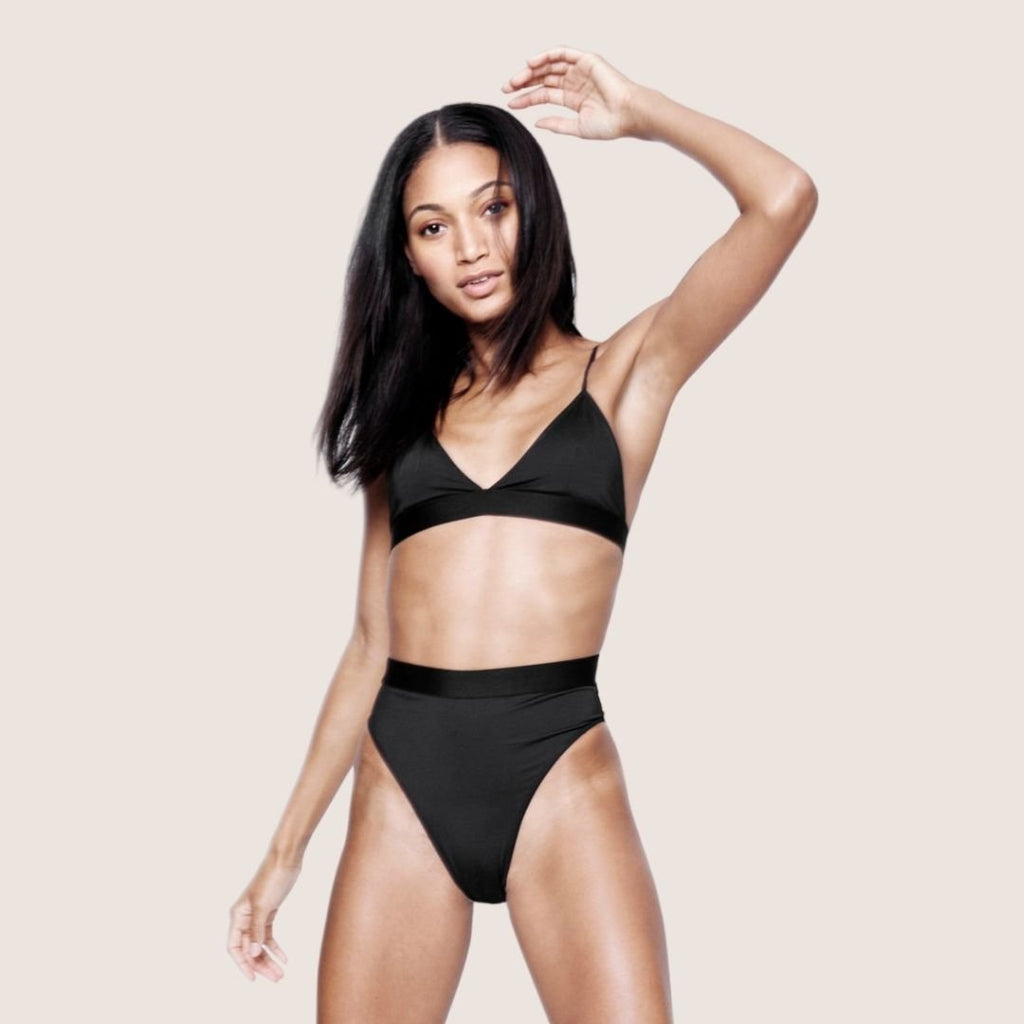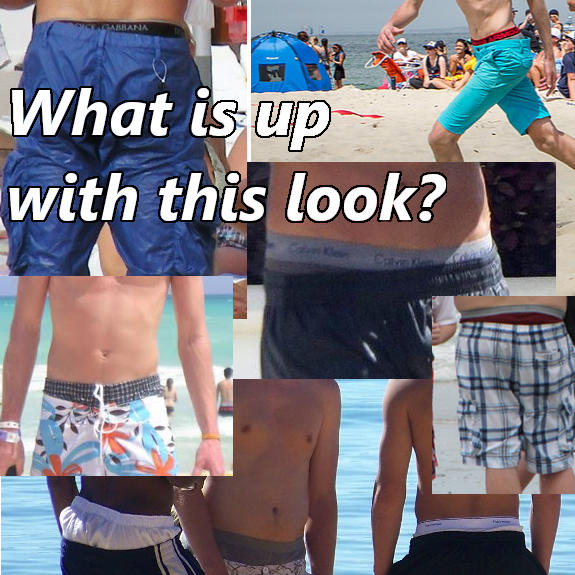Content Menu
● The Temptation of Convenience
● Material Matters
● Fit and Function
● Hygiene and Health Considerations
● Social and Cultural Norms
● The Rise of Underwear-Inspired Swimwear
● Alternatives and Solutions
● The Verdict
● Embracing Proper Swimwear
● The Importance of Body Positivity
● The Future of Swimwear
● Video: Why You Shouldn't Wear Underwear Under Your Swimwear
● Frequently Asked Questions
>> 1. Q: Is it ever okay to use underwear as swimwear?
>> 2. Q: What are the main differences between swimwear and underwear fabrics?
>> 3. Q: Can I wear a sports bra as a swimsuit top?
>> 4. Q: Are there health risks associated with using underwear as swimwear?
>> 5. Q: How can I choose swimwear that looks like underwear but is suitable for swimming?
As summer approaches and the allure of beaches and pools beckons, an age-old question resurfaces: Can you use underwear as swimwear? This seemingly simple query opens up a Pandora's box of fashion dilemmas, practical considerations, and social norms. Let's dive deep into this intriguing topic and explore the various aspects of using underwear as swimwear.
Related: What Is The Difference between Swimwear And Underwear?
The Temptation of Convenience
It's a scenario many of us have faced: You're invited to an impromptu pool party or beach outing, but you don't have a proper swimsuit on hand. The temptation to simply use your underwear as a makeshift swimsuit can be strong. After all, both garments cover the same areas of the body, right? While this may seem like a convenient solution, there are several factors to consider before taking the plunge.
Material Matters
One of the primary differences between underwear and swimwear lies in the fabric used. Swimwear is specifically designed to withstand exposure to chlorine, saltwater, and prolonged sun exposure. These materials are often quick-drying and resistant to fading. On the other hand, most underwear is made from cotton, silk, or other fabrics that are not intended for aquatic use.
When submerged in water, regular underwear can become heavy, clingy, and see-through. This not only creates an uncomfortable experience for the wearer but can also lead to potentially embarrassing situations. Moreover, the fabric may not hold up well to the harsh chemicals found in pool water or the corrosive nature of saltwater, leading to premature wear and tear.

Fit and Function
Swimwear is engineered with specific features to enhance performance and comfort in aquatic environments. Many swimsuits come with built-in support, such as underwire or molded cups for women's tops, and lining or mesh support for men's swim trunks. These features provide necessary coverage and support during water activities.
Underwear, while designed for daily wear, lacks these specialized features. Without proper support, you may find yourself constantly adjusting your makeshift swimwear or feeling self-conscious about potential wardrobe malfunctions. This can detract from your enjoyment of water activities and may even pose safety risks if you're engaging in more vigorous water sports.

Hygiene and Health Considerations
Using underwear as swimwear also raises concerns about hygiene and health. Swimwear is designed to dry quickly, reducing the risk of bacterial growth and skin irritation. Regular underwear, especially when wet, can create a moist environment that's conducive to the growth of harmful bacteria and fungi.
Additionally, the chemicals used in pools can interact with the dyes and fabrics of regular underwear, potentially causing skin irritation or allergic reactions. Swimwear is often treated to be more resistant to these chemicals, providing an extra layer of protection for your skin.
Social and Cultural Norms
Beyond the practical considerations, there's also the matter of social acceptability. In many cultures, there's a clear distinction between underwear and swimwear, even if the amount of coverage is similar. Wearing visible underwear in public spaces is often considered a faux pas, and this social norm extends to aquatic environments.
Using underwear as swimwear may make others uncomfortable or draw unwanted attention. It's important to be mindful of the social context and respect the norms of the spaces you're in, whether it's a public beach, a community pool, or a private gathering.
The Rise of Underwear-Inspired Swimwear
Interestingly, the fashion industry has taken note of the aesthetic appeal of underwear and incorporated elements of lingerie design into swimwear. This has led to the emergence of underwear-inspired swimwear, which offers the look of intimate apparel with the functionality of proper swimsuits.
These designs often feature high-cut legs, delicate straps, and lacy details reminiscent of boudoir fashion. However, it's crucial to note that these pieces are still constructed using swim-appropriate materials and designed for water use. They offer a stylish compromise for those who appreciate the look of underwear but require the practicality of swimwear.

Alternatives and Solutions
If you find yourself in a situation where you need swimwear but don't have any on hand, there are several alternatives to consider before resorting to using underwear:
1. Emergency swimwear: Many beachside shops and resort areas sell inexpensive, basic swimwear that can serve as a quick solution.
2. Sports bras and workout shorts: For women, a dark-colored sports bra paired with quick-drying workout shorts can serve as a temporary swimsuit alternative.
3. Board shorts: Men can often get away with wearing board shorts without a top, which is acceptable at many beaches and pools.
4. Rash guards: These quick-drying shirts designed for water use can be paired with shorts for a modest swimwear alternative.
5. Cover-ups: If you must use underwear, consider wearing a beach cover-up or t-shirt over it to maintain modesty and adhere to social norms.
The Verdict
While it may be tempting to use underwear as swimwear in a pinch, it's generally not recommended for reasons of comfort, durability, hygiene, and social acceptability. The risks of wardrobe malfunctions, discomfort, and potential health issues outweigh the convenience of this quick fix.
Instead, it's best to be prepared by keeping a basic swimsuit on hand or exploring alternative options that are more suitable for water activities. If you appreciate the aesthetic of underwear-like swimwear, look for specially designed pieces that offer the best of both worlds – the style of lingerie with the functionality of proper swimwear.

Embracing Proper Swimwear
Investing in proper swimwear not only ensures your comfort and safety during water activities but also allows you to fully enjoy your time at the beach or pool without worry. Modern swimwear comes in a wide variety of styles, sizes, and designs to suit every body type and personal preference. From modest one-pieces to daring bikinis, from classic trunks to fashionable board shorts, there's something for everyone.
Moreover, many swimwear brands are now focusing on sustainability, using recycled materials and eco-friendly production methods. This allows consumers to make environmentally conscious choices while still enjoying stylish and functional swimwear.
The Importance of Body Positivity
It's worth noting that the anxiety around swimwear often stems from body image issues. The pressure to look a certain way in revealing clothing can be overwhelming. However, it's important to remember that all body types are beach bodies. Choosing swimwear that makes you feel comfortable and confident is far more important than adhering to fleeting trends or unrealistic beauty standards.
Whether you prefer full coverage or minimal tan lines, the key is to find swimwear that allows you to move freely and enjoy your time in the water without constant adjustment or self-consciousness. This confidence is far more attractive than any particular style of swimwear.

The Future of Swimwear
As technology advances, we're seeing innovations in swimwear design that blur the lines between different types of garments. From swimsuits with UV protection to those with built-in waterproof pockets for smartphones, the swimwear of the future promises to be more functional and versatile than ever before.
Some companies are even experimenting with swimwear that can transition seamlessly from beach to street wear, potentially eliminating the need for separate outfits. While these innovations are exciting, they still prioritize the specific needs of water-based activities, something that regular underwear simply cannot do.
In conclusion, while the question "Can you use underwear as swimwear?" may seem straightforward, the answer involves a complex interplay of practical, social, and personal considerations. While it may be possible in an absolute emergency, it's generally not advisable. Instead, embrace the wide world of proper swimwear, find styles that make you feel confident and comfortable, and enjoy your time in the water without worry.
Remember, the best swimwear is the kind that allows you to forget you're wearing it at all, freeing you to create wonderful memories of sun, sand, and surf. So next time you're packing for a beach trip or pool day, make sure to include appropriate swimwear – your comfort, health, and peace of mind will thank you.
Video: Why You Shouldn't Wear Underwear Under Your Swimwear
To further illustrate the points discussed in this article, here's a video that explains why wearing underwear under your swimwear is not recommended:
This informative video delves into the reasons why it's best to avoid wearing underwear beneath your swimwear, providing visual examples and expert opinions on the matter.
Frequently Asked Questions
1. Q: Is it ever okay to use underwear as swimwear?
A: While it's not recommended, in an absolute emergency, it might be your only option. However, it's best to find alternatives or proper swimwear whenever possible due to issues with comfort, durability, and hygiene.
2. Q: What are the main differences between swimwear and underwear fabrics?
A: Swimwear is typically made from quick-drying, chlorine-resistant materials like nylon or polyester blends. Underwear is often made from cotton, silk, or other fabrics not designed for water use, which can become heavy and see-through when wet.
3. Q: Can I wear a sports bra as a swimsuit top?
A: While not ideal, a dark-colored sports bra can serve as a temporary swimsuit top in a pinch. However, it's not designed for chlorine or saltwater exposure and may not provide adequate support for water activities.
4. Q: Are there health risks associated with using underwear as swimwear?
A: Yes, using underwear as swimwear can increase the risk of bacterial and fungal infections due to retained moisture. Additionally, the interaction between underwear fabrics and pool chemicals may cause skin irritation.
5. Q: How can I choose swimwear that looks like underwear but is suitable for swimming?
A: Look for swimwear brands that offer underwear-inspired designs. These pieces will have the aesthetic of lingerie but are made with appropriate swim fabrics and construction techniques for water use.






































